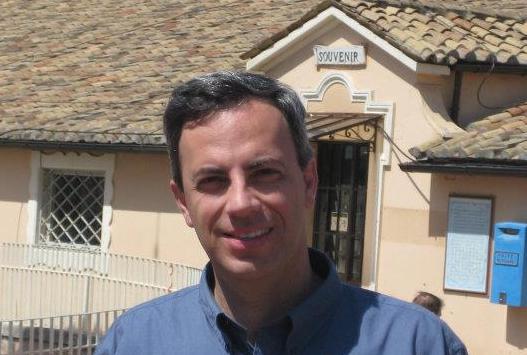
Excerpts from an article by Elder Gerald N. Lund appeared on LDSLiving. From the book The Second Coming of the Lord
Over and over the Lord has indicated that the time of the end is near and that the day of His coming will be soon. And yet most of those scriptural passages are now almost two hundred years old, but we are still waiting for their fulfillment. So how are we to interpret words like “close,” “quickly,” “soon,” “hasten,” and “speedily”? This is why some, including some faithful Church members, claim that we have no reason to believe that the Second Coming is not still five or six hundred years away, and that we are working ourselves up into a dither over nothing.
To understand these prophecies, we need to consider some things about time, such as how we perceive time and how we are interpreting the pertinent scriptural terminology. In doing so, perhaps many of these seeming contradictions can be explained.
Here are some things to consider as we contemplate issues related to time and the future:
1. We must be careful that we don’t assume that our interpretation of what a word or phrase means is the right one, or the only one. For example, let’s examine more closely what Moroni said to Joseph Smith on September 21, 1823. He quoted the eleventh chapter of Isaiah, saying that it was about to be fulfilled. Some people assume that is a reference to Christ’s Second Coming. But a reading of that chapter shows that while there are references to things that are still in the future for us—e.g., the return of the ten tribes (see Isaiah 11:16)—most of the chapter has reference to other things, such as the raising up of a prophet in the latter days, the Restoration of the kingdom of God, and the beginning of the gathering in of the house of Israel. We now know that the prophet was Joseph Smith and that the kingdom is The Church of Jesus Christ of Latter-day Saints.
2. In our day and age, we perceive time and deal with the passage of time much differently than most other generations did. In this day, time is so intertwined in our daily lives that we rarely even think about the concept of time itself. Here are some examples of that:
Unlike our ancestors of ages past, our measurement of time is very precise. Some Olympic events are measured down to a thousandth of a second. Atomic clocks can measure a millionth of a second. We constantly measure our lives in hours, minutes, and occasionally even seconds, whereas centuries ago, people measured their time in days, weeks, seasons, and years.
3. Time is a constant, but our perception of time is relative and can vary from one moment to another. Here’s a simple example of this fact. A person—let’s call her Sally—gets a twenty-minute break twice each day during her eight-hour shift at her workplace. After a while, she notices how quickly that time passes. Barely has she sat down, it seems, when her break time is over. Then one day she has an idea. She finds a place to sit where there is a wall clock right above her. As she rests, she frequently glances up at the time, and to her surprise, the time seems to pass much more slowly. She knows that it actually doesn’t, but it feels like it does, and so thereafter that is where she takes her breaks.
4. We are taught that God does not experience or perceive time in the same way humans do. We don’t fully understand how this is possible, but there are several scriptures that teach that God perceives time differently than we do. A question was once put to Joseph Smith about time: “Is not the reckoning of God’s time, angel’s time, prophet’s time, and man’s time, according to the planet on which they reside?” What Joseph said about God and time is intriguing: “The angels . . . reside in the presence of God, on a globe like a sea of glass and fire, where all things for their glory are manifest, past, present, and future, and are continually before the Lord” (D&C 130:4, 6–7).
Earth Time, Kolob Time, and God’s Time
In his second general epistle to the early members of the Church, Peter wrote: “Be not ignorant of this one thing, that one day is with the Lord as a thousand years, and a thousand years as one day” (2 Peter 3:8). The world has puzzled over that statement ever since.
Through the Urim and Thummim, Abraham was taught that Kolob is a celestial body that God said was “near unto me” (Abraham 3:3). Abraham was also taught that one revolution of Kolob (its orbit, we presume) was “a day unto the Lord, after his manner or reckoning,” but was “one thousand years” in our time reckoning (Abraham 3:4).
We now know that it is not only our perception of time that influences how we experience it, but also where we are in space—another thing Einstein postulated. More importantly, we now have a precise comparison of our time and God’s time. So with that, let’s do some mathematical conversions from the “Lord’s time” to “our time.”
• If one of the Lord’s “days” is 1,000 of our years, then one of his “weeks” would be 7,000 of our years.
• On that same scale, our coming Millennium would last for only one of the Lord’s days.
• On that same scale, one “hour” of the Lord’s time would be 41.7 years of our time on earth.
• One “minute” of the Lord’s time would be 254 of our “days,” or about two-thirds of a year.
Summary and Conclusions
I hope it gives us a new perspective on the scriptural use of “time” terminology. As noted, there are some who ask a different question. It goes something like this: “Every generation since the time of Christ has had people who were absolutely certain that Christ would come in their day. Here we are, two thousand years later, and we still hear that same claim. What hard evidence do we have that we’re not just like all the others and that His coming is not still five or six hundred years in the future?” (all quotes from The Second Coming of the Lord)
We are not suggesting that the Second Coming could happen any day now—or even next year. There are still too many things left to be done. However, the pace of prophetic fulfillment is increasing, and our prophets, seers, and revelators keep reminding us that the time for preparation is here.
Originally published in 1971, The Coming of the Lord, by Gerald N. Lund, became an instant bestseller and has remained continuously in print for nearly fifty years. Now the book has been fully updated and rewritten to reflect the latest prophetic teachings and is published as The Second Coming of the Lord

